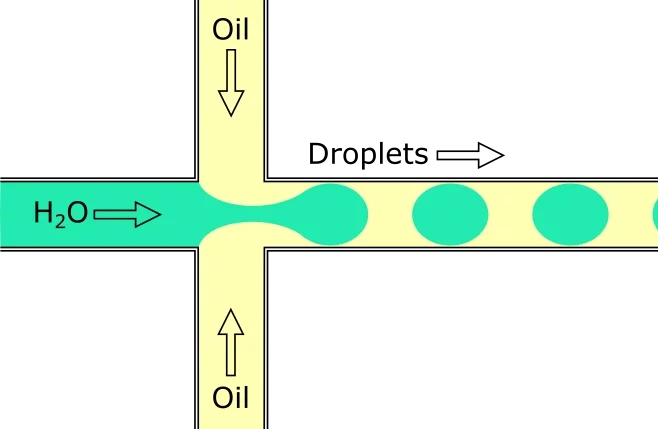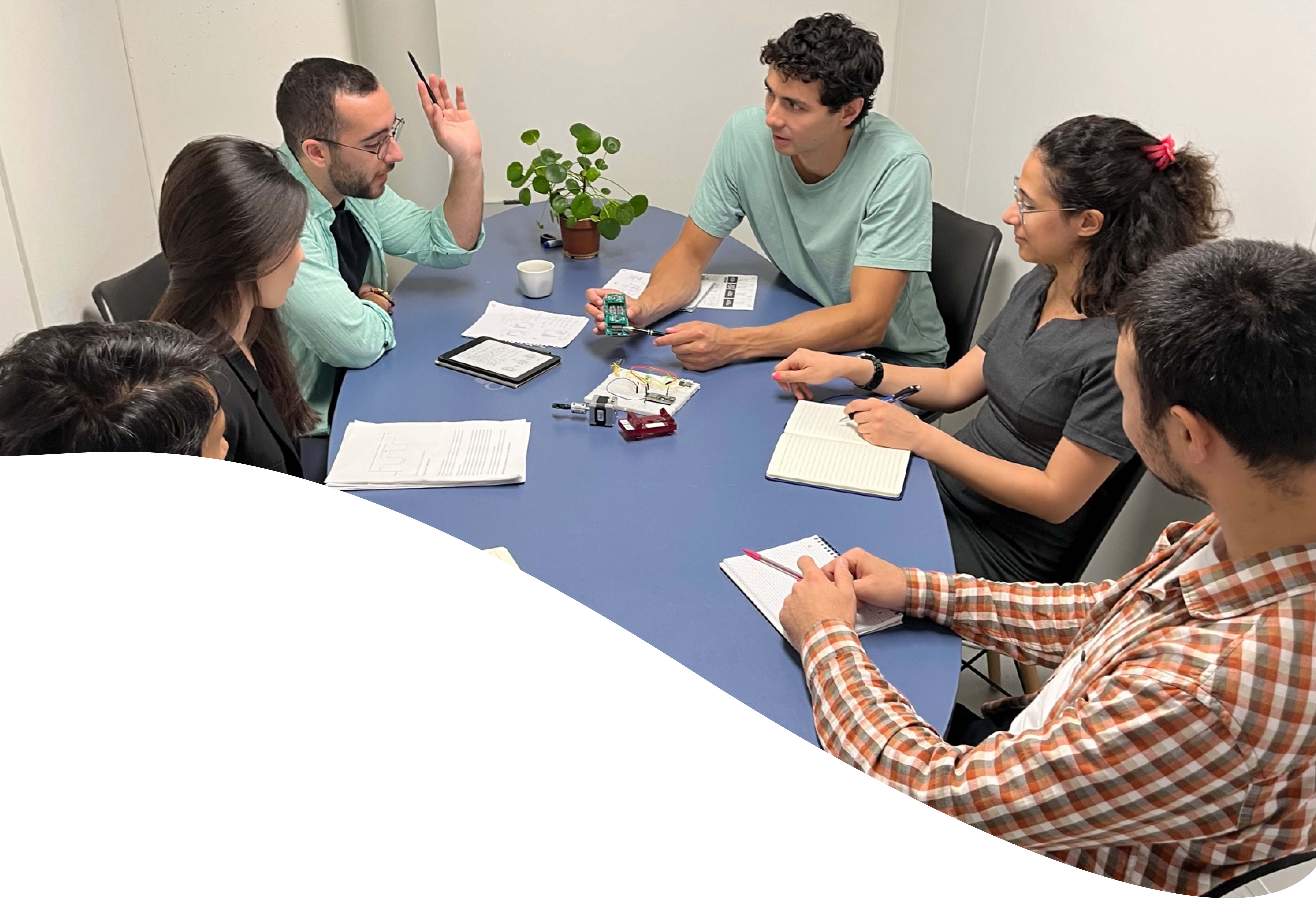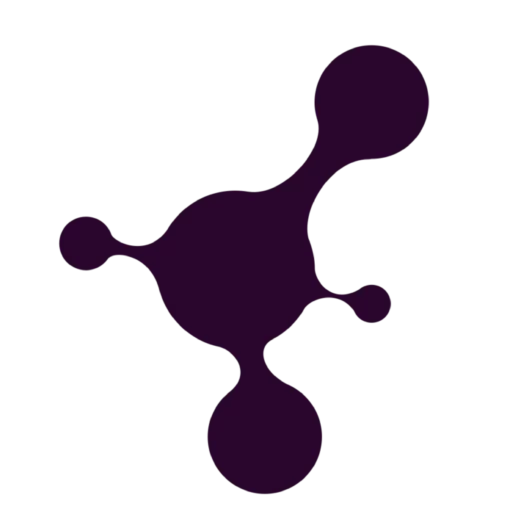Droplet Generator Pack
Achieve high-precision droplet microfluidics
Precise flow control
Delivers unparalleled accuracy in fluid regulation
Reproducible and easy generation
Produce highly monodisperse droplets (CV<3%)
Versatile for multiple applications
Cell encapsulation, emulsions, droplet sorting, particle synthesis, etc.

Need a microfluidic SME partner for your Horizon Europe project?
Droplet generator pack
What is a droplet generator for microfluidics?
Droplet microfluidics is an advanced technique that enables the precise manipulation of liquid droplets within microchannels, providing a highly controlled environment for chemical and biological processes [1]. By leveraging a setup like a droplet generator pack, and enabling liquid handling for precise droplet formation, researchers can produce uniform and stable droplets by controlling the flow of immiscible phases, such as oil and water.
Moreover, this ability to generate monodisperse droplets with precision has transformed numerous research fields, allowing for enhanced reaction control, increased efficiency, and significant reductions in reagent consumption [2]. The integration of a droplet generator into experimental workflows ensures high-throughput and reproducible droplet formation, making it a critical tool for applications ranging from drug discovery to materials science [3].
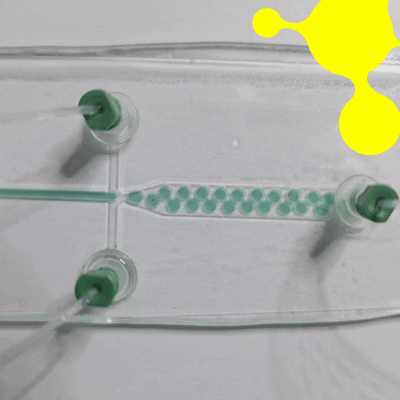
Setup
Flow sensor (Galileo, MIC)
Pressure controller
Your own Imaging system
Reservoirs
Tubings and fittings
Microfluidic chip
User guide
Software
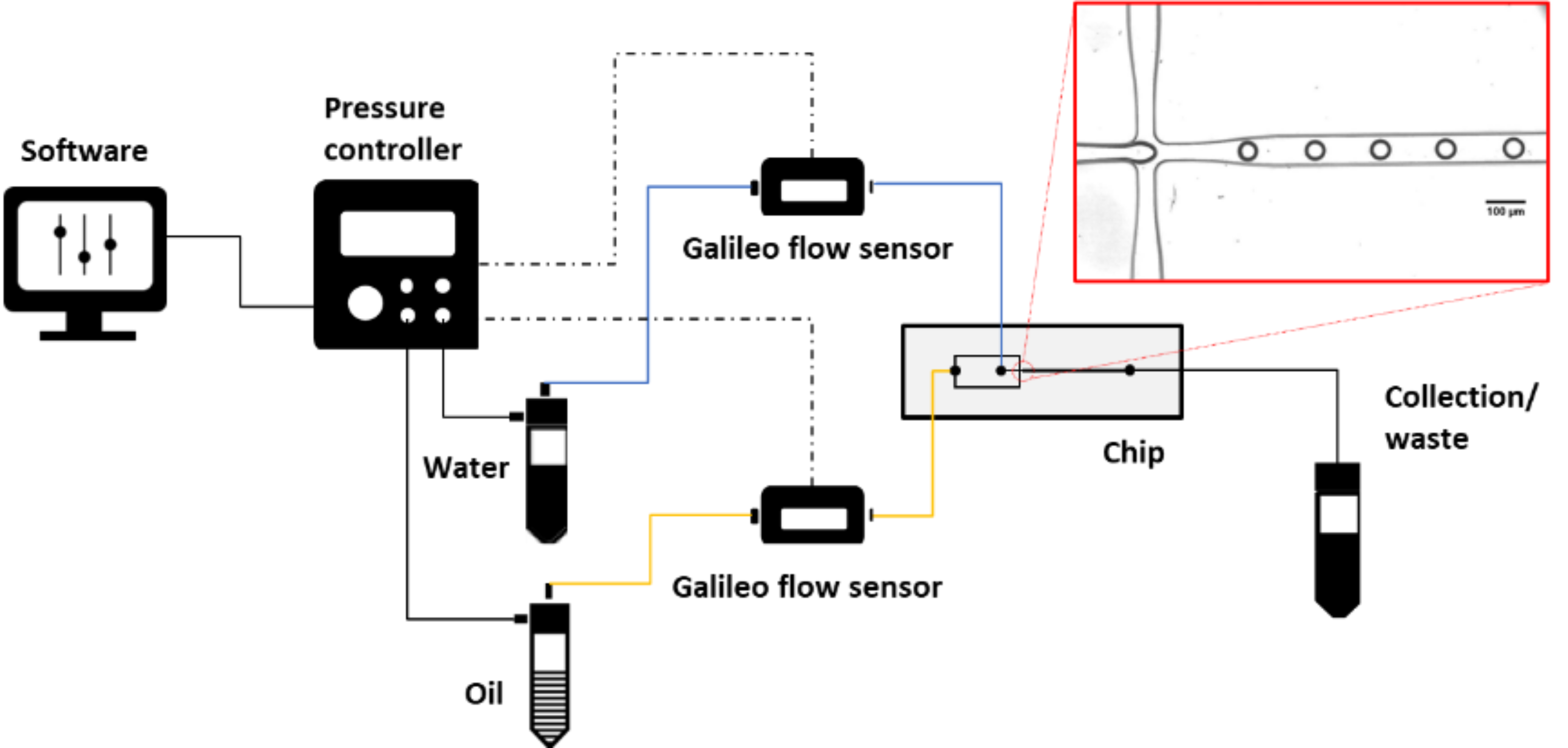
Use-case application of viscous liquid flow rate measurement
An application of viscous liquid flow rate measurement and/or control is shown for microfluidic droplet generation (Figure 3). In this setup, water-in-oil (W/O) droplets were generated using hexadecane as the continuous phase and water as the dispersed phase, within a cross-junction microfluidic channel.
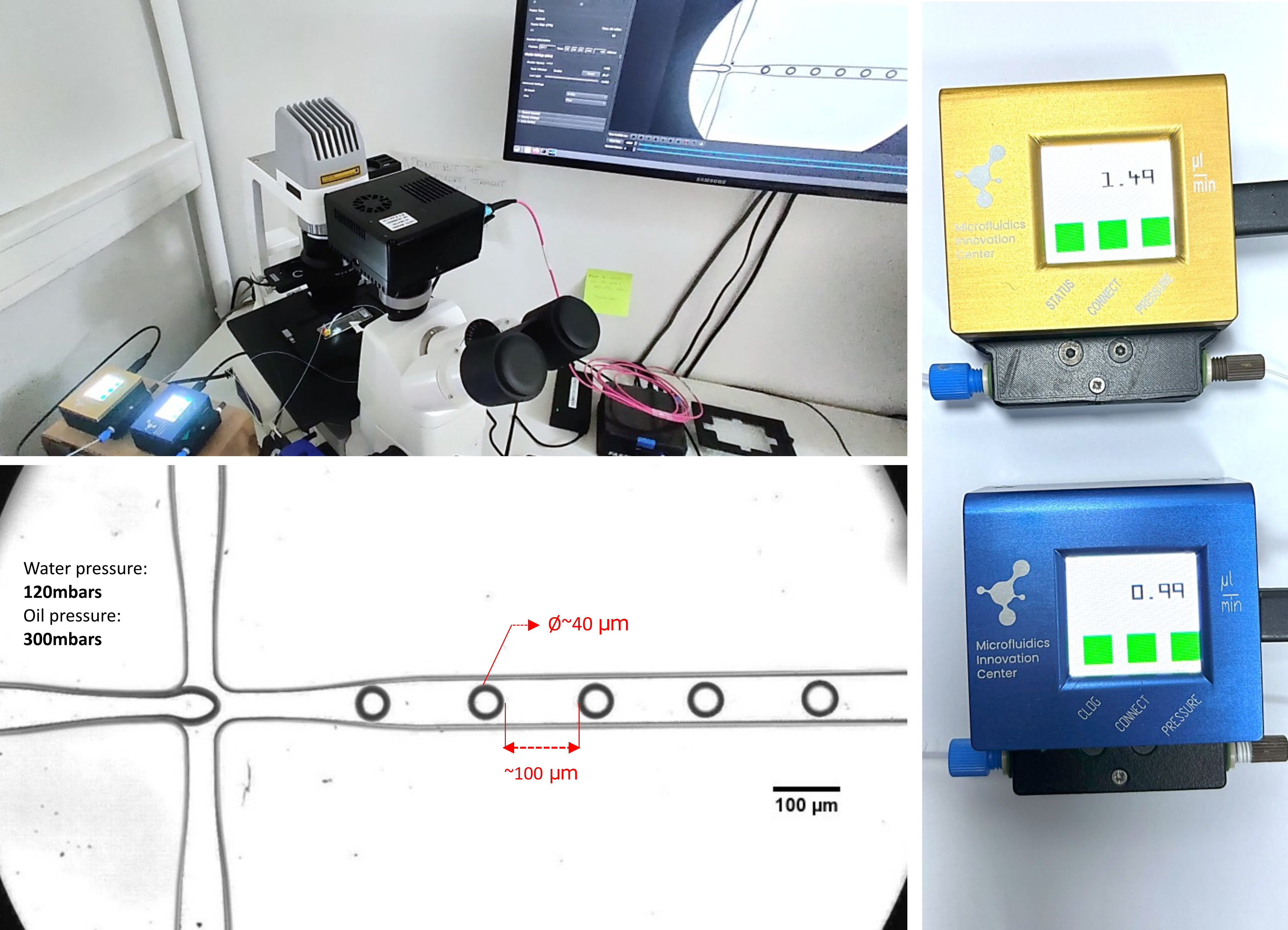
References
1. Yadav, S. et al. (2022). Droplet microfluidics: fundamentals and its advanced applications.
2. Zhang, H. et al. (2015). Recent advances in applications of droplet microfluidics.
3. Ali, M. et al. (2023). Droplet microfluidic technologies for next-generation high-throughput screening.
Applications of droplet generator pack
The use of droplet generators extends far beyond simple droplet formation. In biomedical research, droplet generator systems allow for encapsulation of single cells, enabling precise genetic and proteomic analysis. This technology plays a crucial role in single-cell sequencing and personalized medicine, where controlled droplet formation ensures consistency across experiments [1].
With the ability to rapidly produce thousands of droplets per second, researchers can analyze vast sample sets with unparalleled efficiency, accelerating the development of new drugs and therapeutic compounds [2].
Beyond biological research, droplet generator technology is widely used in nanoparticle and microparticle synthesis, ensuring uniform size and composition [3]. In material science, the controlled production of emulsions, minocapsules, and structured materials has opened new possibilities for drug delivery systems, chemical reactions, and advanced coatings [3]. The ability to fine-tune droplet size and stability makes droplet generators invaluable in fields such as food science, environmental testing, and industrial formulation, where precision is essential [3].
The increasing adoption of droplet generators across various disciplines highlights their ability to improve experimental reproducibility, minimize waste, and enhance analytical accuracy [4]. As microfluidic technology continues to evolve, next-generation droplet generators will play an even greater role in automated laboratory workflows, scalable drug development, and industrial applications [4].
By integrating a high-precision droplet generator, researchers and industry professionals can achieve a new level of control, efficiency, and innovation in their work.
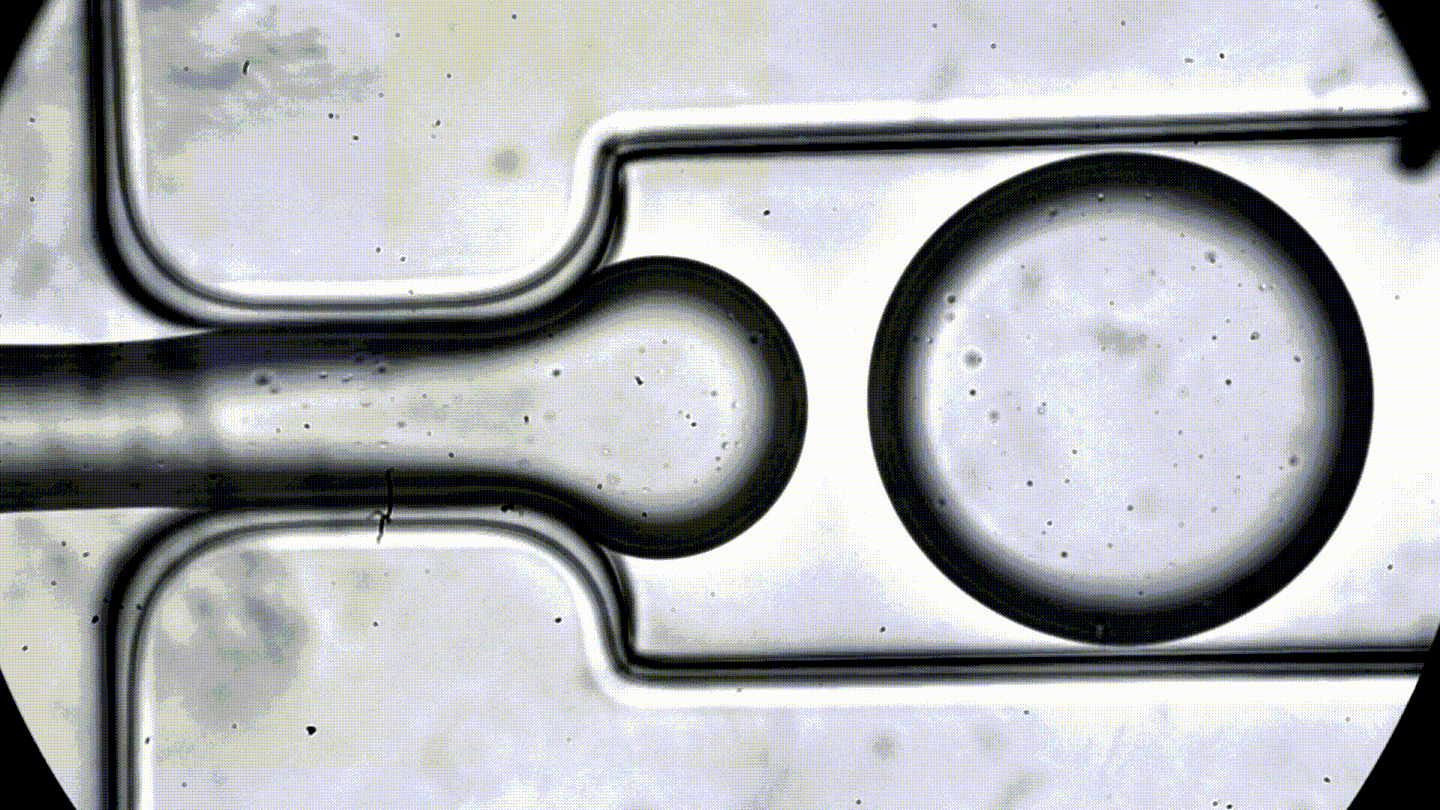
References
Yadav, S. et al. (2022). Droplet microfluidics: fundamentals and its advanced applications.
Ali, M. et al. (2023). Droplet microfluidic technologies for next-generation high-throughput screening.
Wang, J. et al. (2017). Droplet Microfluidics for the Production of Microparticles and Nanoparticles.
Robotic automation of droplet microfluidics (2022).
Perfusion pump technical specifications
| Pressure control | |
|---|---|
| Pressure range | -400 to 600 mbar |
| Pressure stability | 0.2 mbar |
| Air flow rate | 0.1 L/min at atmospheric pressure Possibility to work with higher air flow rates by reducing the pressure range |
| Flow control | |
| Microfluidic flow sensor | Monitoring and feedback loop flow control available |
| Flow rate | From 0.1 µL/min to 5 mL/min |
Flow sensor technical specifications
Flow rate ranges: For example, flow rate ranges with <5% accuracy:
- 0.5 – 60 µL/min
- 2 – 150 µL/min
- 40 – 1200 µL/min
- 0.5 – 10 mL/min
Note that the range can be customized depending on working fluid properties (viscosity, etc.)
Calibrated liquids: aqueous media (others are possible upon request)
Wetted materials: PEEK, steel, fluorosilicone, perfluoropolyether resin
Internal volume: approx. 40 µL (variable depending on the used configuration range)
Operation pressure: up to 3 bar gauge pressure
Maximum pressure rating: up to 6 bar gauge pressure
Software operability: standalone GUI for data visualization and logging; optional Python API
Please note that this is a beta version of this technology, so exact specifications are subject to change.

Frequently asked questions
Can I use other types of pumps to drive the fluid?
Yes, droplet generation is possible with a pressure source, syringe pumps and peristaltic pumps. Make sure that the pump delivers the right flow rate as this affects the droplet generation and its size.
How do I ensure my pump provides stable/right flow rates?
Use a pressure driven source for better stability and accuracy of flow. In case of syringe pumps or peristaltic pumps, use a flow sensor (like Galileo) in-line, to be sure the pump delivers the right flow rate.
I do not have droplets or they are inconsistent. What do I do?
Make sure the flow rates are right, the channel is flushed/cleaned before starting and you use the right surfactant concentration.
How can we help your experiment?
This pack is in beta testing phase. So, although the instruments are not fully industrialized, we can provide extensive support as part of our beta testing program. Get in touch to see if you are eligible.



